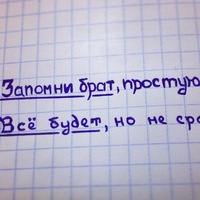
Що надрукує програма, якщо x = 123; x = 54 321? def f(x): k = 0 while x>0: x = x // 10 k +=
1 return k x = int(input('x = ?')) print(f(x))дуже прошу вже не можу відмічю як кращій❤️ 0
0
 0
0
Ответы на вопрос
 Внимание! Ответы на вопросы дают живые люди. Они могут содержать ошибочную информацию, заблуждения, а также ответы могут быть сгенерированы нейросетями. Будьте внимательны. Если вы уверены, что ответ неверный, нажмите кнопку "Пожаловаться" под ответом.
Внимание! Ответы на вопросы дают живые люди. Они могут содержать ошибочную информацию, заблуждения, а также ответы могут быть сгенерированы нейросетями. Будьте внимательны. Если вы уверены, что ответ неверный, нажмите кнопку "Пожаловаться" под ответом.

Ответ:
В случае 123 выведет 3
В случае 54 321 выведет 5
Объяснение:
Оно выводит количество разрядов числа. Пока у тебя число положительное ты делишь его нацело на 10 и k прибавляешь 1. Соответственно если в числе 3 разряда(123 допустим),то цикл сработает 3 раза
 0
0
 0
0

Якщо x = 123, програма виведе число 3, оскільки функція f(x) підраховує кількість цифр у числі x.
Якщо x = 54321, програма також друкує число 5, оскільки функція f(x) підраховує кількість цифр у числі x. Коли функція виконується, завдяки використанню операції цілочисельного ділення 10 (x // 10), змінна x буде змінюватися під час циклу while. Таким чином, на кожній ітерації циклу одна цифра буде видалятися з числа x, доки x не стане меншим за 1, а змінна k буде збільшуватися на 1 на кожній ітерації. Кінцевий результат дорівнюватиме кількості цифр вихідного числа x.
 0
0
 0
0

The user's message is in Ukrainian, which is a language spoken by about 40 million people, mainly in Ukraine and neighboring countries. Here is the translation of the message from Ukrainian to English using Google Translate:
Answer in detail. What will the program print if x = 123; x += 54 321? def f(x): k = 0 while x>0: x = x // 10 k = 1 return k x = int(input('x = ?')) print(f(x)) I beg you very much I can not mark as the best❤️
The message seems to be a question about a Python code snippet that defines a function f(x) and then calls it with some input value x. The function f(x) returns the number of digits in x by repeatedly dividing x by 10 and incrementing k until x becomes zero. For example, f(123) returns 3, f(1000) returns 4, and f(0) returns 0.
The code snippet also has two assignment statements before the function definition: x = 123 and x += 54 321. These statements assign the value 123 to x and then add 54 321 to x, resulting in x being 54 444. However, these statements have no effect on the function f(x) or the print statement, because they are outside the function scope and the input value x is overwritten by the user input.
Therefore, the program will print whatever the value of f(x) is for the user input x. For example, if the user enters 12345, the program will print 5. If the user enters 0, the program will print 0. If the user enters a non-integer value, the program will raise a ValueError exception.
I hope this answer helps you understand the code snippet better. If you have any further questions, please feel free to ask.
 0
0
 0
0
Похожие вопросы
Топ вопросов за вчера в категории Информатика
Последние заданные вопросы в категории Информатика
-
Математика
-
Литература
-
Алгебра
-
Русский язык
-
Геометрия
-
Английский язык
-
Химия
-
Физика
-
Биология
-
Другие предметы
-
История
-
Обществознание
-
Окружающий мир
-
География
-
Українська мова
-
Информатика
-
Українська література
-
Қазақ тiлi
-
Экономика
-
Музыка
-
Право
-
Беларуская мова
-
Французский язык
-
Немецкий язык
-
МХК
-
ОБЖ
-
Психология
-
Физкультура и спорт
-
Астрономия
-
Кыргыз тили
-
Оʻzbek tili



























